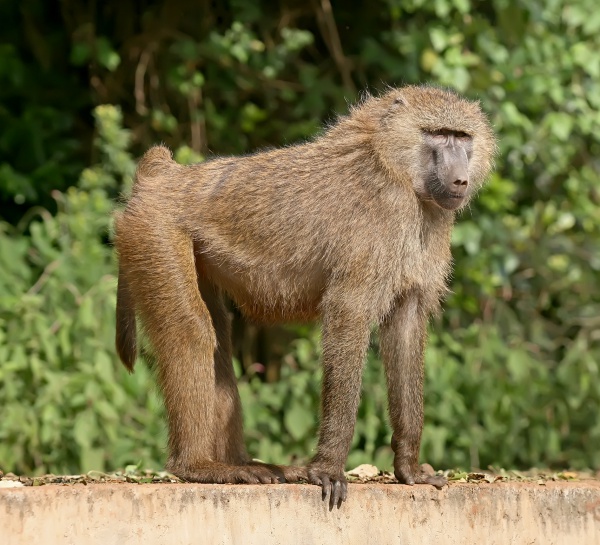Facts About Olive baboon
The olive baboon, also known as the Anubis baboon, is a captivating member of the Cercopithecidae family and holds the distinction of being the most widely distributed baboon species, inhabiting 25 African countries. From a distance, their coat appears green-grey, but up close, you'll notice a blend of yellow-brown and black rings. Male olive baboons are particularly striking, boasting a mane and being larger than the females. These baboons are among the largest monkey species in existence.
Olive baboons thrive in a variety of African habitats, ranging from savannahs and rainforests to deserts. Interestingly, they can even hybridize with other baboon species. They live in groups with a complex social structure where dominance dictates hierarchy. Females tend to form strong bonds and usually stay in their birth groups, while males leave and compete for dominance in new groups. They exhibit promiscuous breeding behaviors, with females attracting males during ovulation. Both males and females participate in parenting, and newborns are characterized by their black fur and pink skin.
Communication among olive baboons includes a combination of vocalizations and facial expressions. Their diet is diverse and adaptable, consisting of everything from plants and invertebrates to small mammals; they even hunt. Due to their widespread distribution and abundance, the IUCN lists olive baboons as a species of least concern. However, they do face threats from human persecution and habitat loss. In some regions, they've developed fascinating relationships with other species—such as teaming up with elephants in Eritrea for mutual benefits.

 Burundi
Burundi